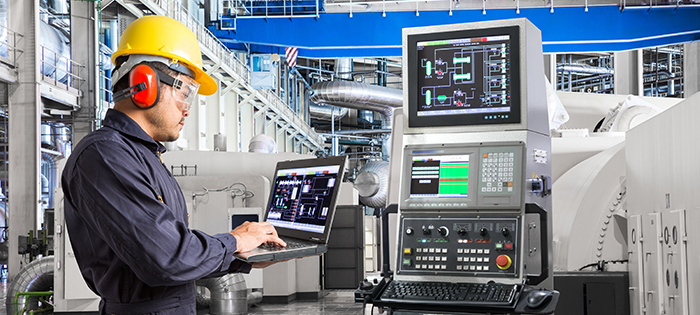- Distributed Natural Gas Generation
- Microgrid
- Combined Heat and Power
- Power Generation
The Future of CHP Is More Flexible and Grid-Interactive

A new generation of flexible, grid-supporting combined heat and power (CHP) projects is getting a boost from the US Department of Energy (DOE). This move furthers the trend toward more flexible distributed natural gas generation covered by Guidehouse Insights in recent reports.
The DOE recently awarded up to $10 million to seven R&D projects that enable small-to-midsize facilities to use CHP systems to provide services to the electric grid. The seven projects deploy various CHP technologies, ranging from gas turbines to organic rankine cycle units, but each system provides some useful flexibility features capable of supporting the wider electric grid from behind-the-meter.
CHP Is Traditionally Inflexible
CHP systems, also known as cogeneration, are onsite power generation technologies that put the otherwise-wasted heat to use. CHP is sometimes deployed by (or in conjunction with) utilities in strategic locations to help support the grid. But more often, they are tolerated as inflexible behind-the-meter resources that utilities are required to allow, and for which utilities generally still must provide standby power.
These systems tend not to be flexible in their output for a variety of reasons. First, the CHP economic fundamentals require that the thermal energy from the system be used for many hours a year—sometimes close to a full 8,760 hours—to justify the expense of setting up the thermal part of the system in the first place. In addition, efficiencies tend to fall for systems that have low or variable output rates. And other reasons exist, like in the case of most stationary fuel cells, which tend to prefer running at full and steady output 24/7 to avoid thermal damage to components.
New Deployments Add Flexibility, Use Cases
The DOE-funded projects, along with other recent deployments, would not just be able to generate the usual cost-effective behind-the-meter heat and power to benefit facility owners. Instead, given a digital link to proper live signals from independent system operators, utilities, or other sources, the systems could respond to grid needs in real time, providing (in some cases) electricity supply, frequency regulation, and capacity based on the needs of the grid. Various methods of attaining flexibility are employed in CHP and/or electric-only applications, including enhanced turndown of gas turbines, using power electronics to run generators at variable speeds, and a variety of advanced microgrid configurations.
Recent Guidehouse Insights work covers trends in this arena. Its Market Data: Combined Heat and Power in Microgrids report covers developments in using CHP in islandable systems in conjunction with other distributed energy resources. And its Smart Gensets report covers CHP and electric-only reciprocating engine gensets being deployed in new use cases that are more interactive with other distributed energy resources and the grid. As generation shifts from centralized toward a distributed paradigm and is increasingly digitally connected, opportunities grow for CHP and all distributed natural gas generation to provide ever more flexibility and support to the grid.